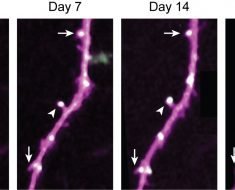
Carefully designed, integrated multi-“omic” studies could accelerate the use of precision medicine for asthma patients, according to researchers from the Icahn School of Medicine at Mount Sinai. In an invited review article published today in the Journal of Allergy and Clinical Immunology, Scott R. Tyler, Ph.D., and Supinda Bunyavanich, MD, MPH report that numerous studies have shown the value of applying transcriptomics and other “omic” approaches (the study of the role, relationships, and actions of a system-wide measure of a given molecular type) for defining asthma subtypes—but they also cite the need for more studies aimed at pulling together these disparate data streams for a more comprehensive view of the disease.
Asthma is a highly heterogeneous disease, presenting with a broad range of symptoms. According to the American Lung Association, more than 26 million Americans have asthma. It is the third most common cause for hospitalization among children. Much effort has gone toward establishing clinical and molecular subtypes—known as endotypes—of asthma in order to better understand the disease and hone treatment recommendations for patients in each group.
“Endotypes are important for physicians and biomedical researchers because they organize the way we think about asthma, which manifests in many different ways across patient populations,” said Dr. Bunyavanich, faculty allergist/immunologist and Associate Professor of Pediatrics and of Genetics and Genomic Sciences, at the Icahn School of Medicine at Mount Sinai. “By strategically integrating clinical and molecular data, it should be possible to identify meaningful endotypes that both enhance our mechanistic understanding of asthma and guide our clinical care of asthma toward the best treatments for each subtype. This is important for optimizing patient outcomes.”
The review covers several types of omic studies that have been applied to asthma already, including transcriptomics, epigenomics, metabolomics, proteomics, and microbiome analysis. But, as the authors note, each approach captures only one dimension of the disease biology. More complex studies that integrate multiple layers of data have begun, but additional work is needed.
Source: Read Full Article





